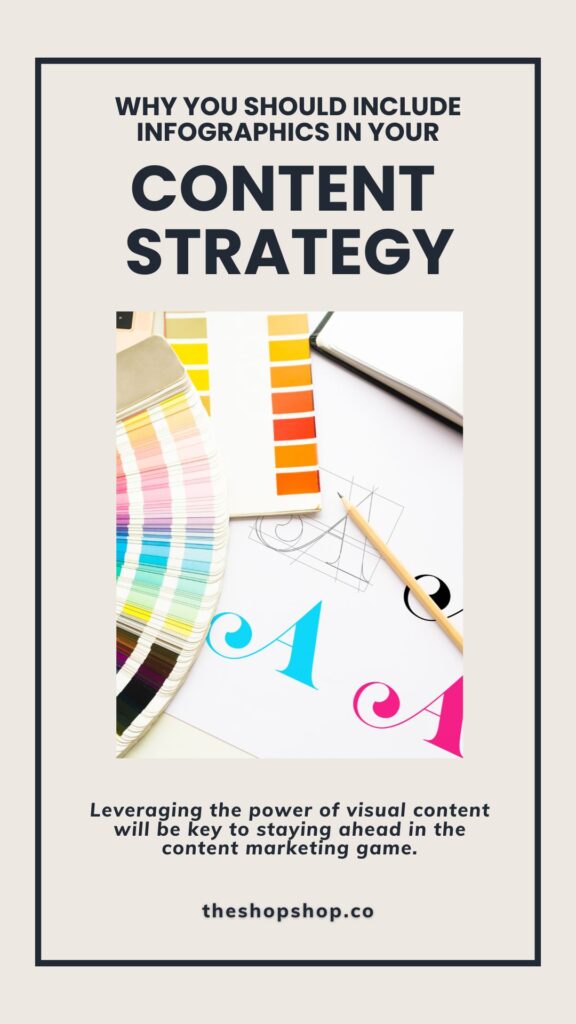Whenever my clients ask for an infographic, I usually ask, “Why?” The most common reasons are that they:
- Want to add visual interest to a design (such as a brochure, information packet, or a webpage)
- Plan to share it on social media
- Hope infographics can boost traffic, data retention, etc.
Most small businesses use infographics to build brand awareness, engage customers, or generate website traffic. However, many businesses struggle to understand the basics of how to make an infographic. Building a better infographic starts with understanding the “info” part.
What is an Infographic?
Designers draft visual images, such as a chart or diagram, used to represent information or data. These graphics include minimal text with the intention of breaking down a complex idea. Customers use infographics to absorb information quickly. Sometimes, referred to as “data visualization,” a strong infographic will focus on a specific concept. It builds a coherent story.
How to Use Infographics
Customers are accustomed to visual content. Therefore, infographics have risen in popularity. They break down complex information into smaller ideas.
Small businesses, in particular, can use infographics to position themselves as helpful and trustworthy. The Small Business Administration (SBA) defines a small business as one with fewer than 500 employees. For businesses of this size, digital marketing tactics have become the preferred medium for generating website traffic. They have a lower, more trackable cost per conversion. Social media, email, and content marketing all benefit from the inclusion of visual information.
For example, Facebook still dominates the social media market with Pew Research Center reporting 68% of adults using the platform. A teaser image with a link on Facebook can drive your target audience to click through to your website. Once on your website, they can respond to a call to action. An interesting infographic can start this process.
How to Ruin an Infographic
There are several key ways that small businesses ruin infographics. First, they neglect the “info” portion. I’ve seen this happen. The project manager “assigns” the job of researching random industry facts. Then, they dump those facts into a template — basically turning numbers into charts.
But this lacks a story. Instead, it vomits information into a pretty design.
Second, they reuse widely-seen concepts and data. Similar to the first point, these infographics lean on previously published works and simply reformat them for their own business.
Finally, they don’t offer a solution. If your business notes a figure, it should also position your product or service as a part of the process. Any mix of these three mistakes creates a useless and forgettable infographic.
7 Tips for Infographics
- Start by planning your facts. This will help you determine a flow for the piece that builds the message from top to bottom. Ideally, it contains information that no one has seen elsewhere. I suggest that a company mines their own data. They can present a process or explain a situation.
- Stick to normal sizes, such as 2048 pixels wide for the web. Although you can create an infographic with any dimension, most designs work well in this format. Just work from that basic width and continue growing your graphic height based on the design.
- Only include reputable facts. Sources should include government websites and reliable publications. As I explained above, original data from your organization adds new data to the conversation. This is the best info you can share.
- Name your sources. This not only lends credibility but also avoids plagiarism. By crediting your sources appropriately, you provide readers with the information they can trust.
- Make sure your brand is well-represented. Your logo and contact information should be present on the graphic. Although it is not the centerpiece, people should know who created the image. You never know where it might be shared.
- Consider promotion. Most likely, your infographic will be hosted on your blog or website. However, your plan should include a method to drive users there. This can include a variety of mediums, such as social media posts, email blasts, or paid advertising. Each platform will require a different preview for the information. So, you will want to create graphics that tease the infographic created for each medium. If you designed your graphic for a print or video piece, consider making a static version on your website. This will allow people to share and reference the data on multiple mediums.
- Get professional help. If you have never made an infographic before, work with someone who has experience developing them. You will get more value out of the piece.
How to Make an Infographic
Good infographics start with good planning. In fact, the “research” and data development portion of this project should take several hours — starting with a broad base of information. Then, you can narrow the content down to a solid message that positions your small business as helpful and trustworthy.
Otherwise, you’re just generating one of the many dull and useless graphics — full of pie charts and quirky typography— that doesn’t really pass along any “info.”
Why You Should Include Infographics in Your 2025 Content Strategy
As we look towards 2025, one strategy that remains a potent tool in content marketing is the use of infographics. These visually appealing and informative graphics can significantly enhance your content strategy. Here’s why infographics should be an essential part of your 2025 content plan.
1. Simplifying Complex Information
One of the primary benefits of infographics is their ability to simplify complex data. In 2025, as industries continue to generate vast amounts of information, presenting this data in a digestible format will be crucial. Infographics can break down intricate details into bite-sized, visually attractive pieces, making it easier for audiences to understand and retain the information.
2. Enhancing Engagement
Visual content is known to boost engagement significantly. Studies have shown that articles with infographics receive more views and shares compared to those without. As attention spans continue to shrink in our fast-paced digital world, grabbing and holding your audience’s attention will be more important than ever. Infographics can capture interest quickly and encourage users to interact with your content.
3. Boosting SEO Performance
Incorporating infographics into your content strategy can also improve your search engine optimization (SEO) efforts. Infographics are highly shareable, and when they are shared across various platforms, they can generate backlinks to your site. These backlinks can enhance your site’s authority and improve its ranking on search engines, driving more organic traffic to your content.
4. Increasing Brand Awareness
Infographics are a great way to strengthen your brand’s identity. By incorporating your brand’s colors, logo, and style into the design, you can create a cohesive visual representation that is easily recognizable. This consistency helps in building brand awareness and loyalty among your audience, making your brand more memorable in a competitive digital market.
5. Catering to Diverse Audiences
Different people consume information in different ways. While some may prefer detailed written content, others might find it easier to grasp information visually. Infographics cater to this diversity by providing an alternative way of presenting information. By including infographics in your content strategy, you can reach a broader audience and accommodate various learning preferences.
6. Encouraging Social Media Sharing
Social media platforms thrive on visual content, and infographics are no exception. Their eye-catching design makes them highly shareable across platforms like Instagram, Pinterest, and LinkedIn. As social media continues to play a crucial role in content distribution in 2025, infographics can help amplify your reach and engagement on these channels.
Incorporating infographics into your 2025 content strategy is a smart move that can yield numerous benefits. From simplifying complex information and enhancing engagement to boosting SEO performance and increasing brand awareness, infographics are a versatile tool that can help you connect with your audience more effectively. Leveraging the power of visual content will be key to staying ahead in the content marketing game.
If you liked this…
My name is Danielle and I have a Lynchburg marketing agency. I’ve brought together a small team that specializes in marketing services for makers, eStores, and retailers. We’ll make sure your products are online and ready to sell. And you can get back to the parts of your business that you love.
Working with us is simple. I am the main point of contact on all my accounts. I visit in person or schedule phone calls to discuss your projects. My team members are all located in Central VA and we work together closely. If that interests you, please reach out to me at [email protected].

Understand Shopping Trends
We’re dropping our next newsletter in July 2025. Sign up for exclusive freebies, giveaways, and industry insights.


